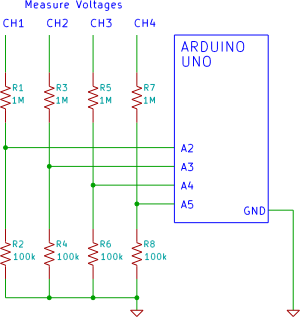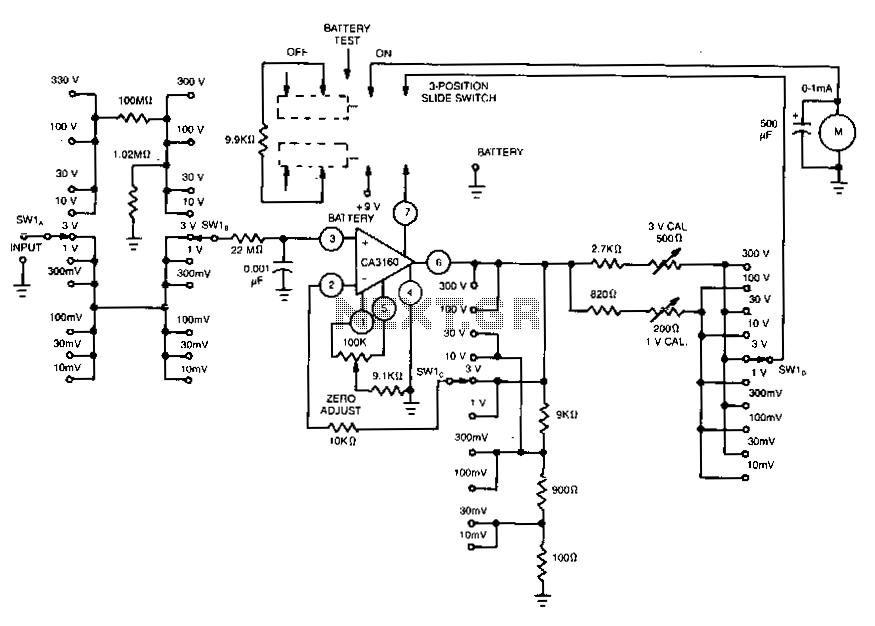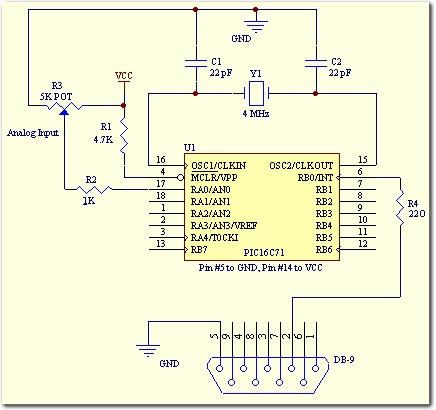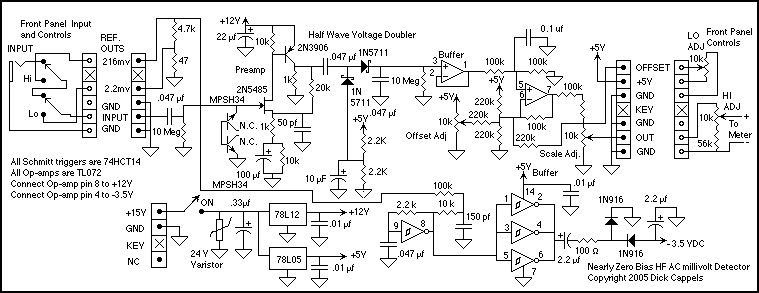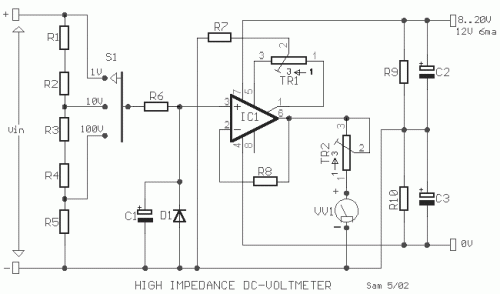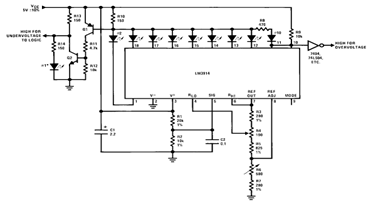
dc VOLTMETER
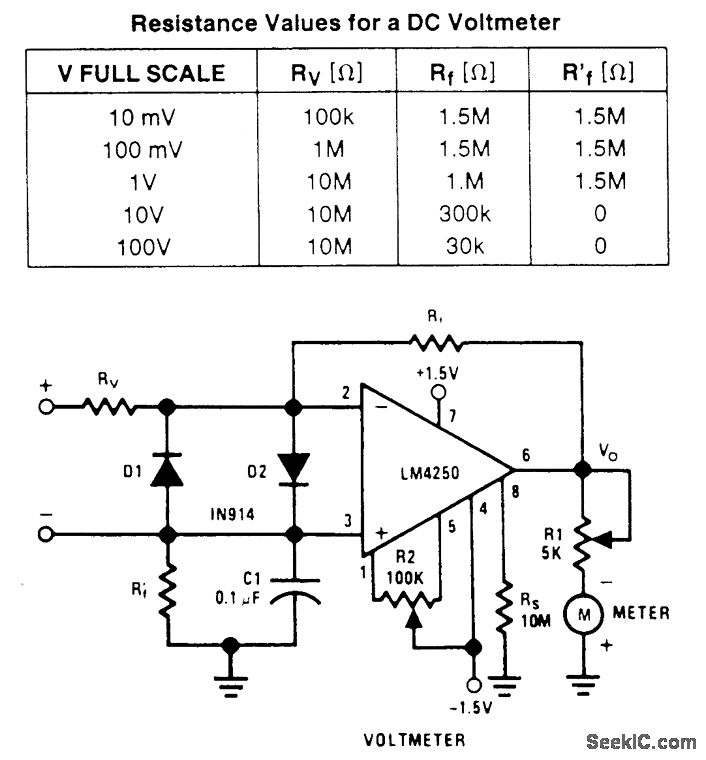
A wide-range voltmeter circuit. This inverting amplifier has a gain varying from -30 for the 10-mV full-scale range to -0.003 for the 100-V full-scale range. Diodes D1 and D2 provide complete amplifier protection for input overvoltages as high as 500V on the 10-mV range, but if overvoltages of this magnitude are expected under continuous operation, the power rating of RV should be adjusted accordingly.
The described circuit is a versatile voltmeter capable of measuring a wide range of voltage levels, from low millivolt inputs to high voltage levels up to 100 volts. The core of the circuit is an inverting amplifier configuration, which is known for its ability to produce an output voltage that is inversely proportional to the input voltage, scaled by a defined gain factor.
In this design, the gain of the amplifier is adjustable, with a maximum gain of -30 for the 10-mV full-scale range, allowing for precise measurements of very low voltage signals. Conversely, for the 100-V full-scale range, the gain is significantly reduced to -0.003, which enables the circuit to handle high voltage inputs without saturating the output.
Protection against overvoltage conditions is provided by diodes D1 and D2, which are strategically placed in the circuit to clamp excessive input voltages, thus safeguarding the amplifier from damage. These diodes are rated to handle input voltages up to 500V when the circuit is set to the 10-mV range, making the circuit robust against accidental overvoltage situations.
It is important to note that if continuous operation under high overvoltage conditions is anticipated, the power rating of the variable resistor RV should be carefully evaluated and adjusted accordingly. This ensures that the resistor can handle the heat generated during operation without compromising the integrity of the circuit.
Overall, this wide-range voltmeter circuit is designed for flexibility and safety, making it suitable for various applications that require accurate voltage measurement across a broad spectrum of input levels. Proper implementation of this circuit can lead to reliable performance in both laboratory and field environments.A wide-range voltmeter circuit. This inverting amplifier has a gain varying from -30 for the 10-mV full-scale range to -0. 003 for the 100-V full-scale range. Diodes D1 and D2 provide com-plete amplifier protection for input overvoltages as high as 500V on the 10-mV range, but if over-voltages of this magnitude are expected under continuous operati on, the power rating of RV should be adjusted accordingly 🔗 External reference
The described circuit is a versatile voltmeter capable of measuring a wide range of voltage levels, from low millivolt inputs to high voltage levels up to 100 volts. The core of the circuit is an inverting amplifier configuration, which is known for its ability to produce an output voltage that is inversely proportional to the input voltage, scaled by a defined gain factor.
In this design, the gain of the amplifier is adjustable, with a maximum gain of -30 for the 10-mV full-scale range, allowing for precise measurements of very low voltage signals. Conversely, for the 100-V full-scale range, the gain is significantly reduced to -0.003, which enables the circuit to handle high voltage inputs without saturating the output.
Protection against overvoltage conditions is provided by diodes D1 and D2, which are strategically placed in the circuit to clamp excessive input voltages, thus safeguarding the amplifier from damage. These diodes are rated to handle input voltages up to 500V when the circuit is set to the 10-mV range, making the circuit robust against accidental overvoltage situations.
It is important to note that if continuous operation under high overvoltage conditions is anticipated, the power rating of the variable resistor RV should be carefully evaluated and adjusted accordingly. This ensures that the resistor can handle the heat generated during operation without compromising the integrity of the circuit.
Overall, this wide-range voltmeter circuit is designed for flexibility and safety, making it suitable for various applications that require accurate voltage measurement across a broad spectrum of input levels. Proper implementation of this circuit can lead to reliable performance in both laboratory and field environments.A wide-range voltmeter circuit. This inverting amplifier has a gain varying from -30 for the 10-mV full-scale range to -0. 003 for the 100-V full-scale range. Diodes D1 and D2 provide com-plete amplifier protection for input overvoltages as high as 500V on the 10-mV range, but if over-voltages of this magnitude are expected under continuous operati on, the power rating of RV should be adjusted accordingly 🔗 External reference
